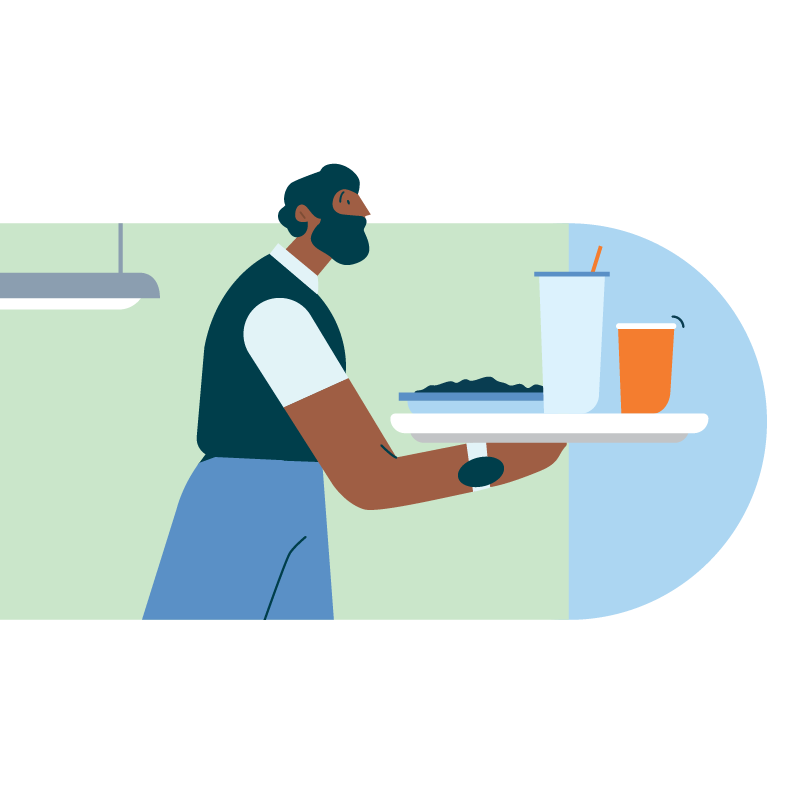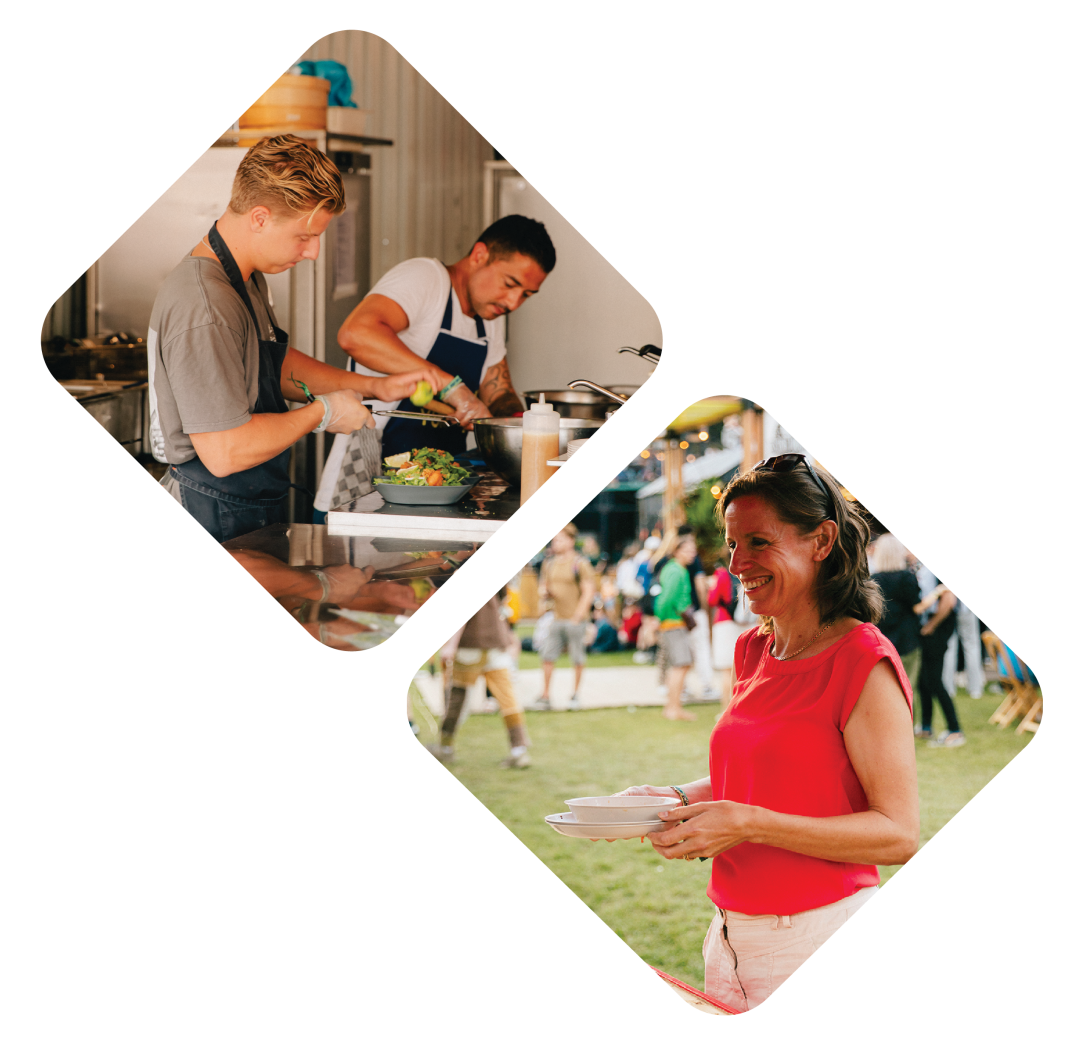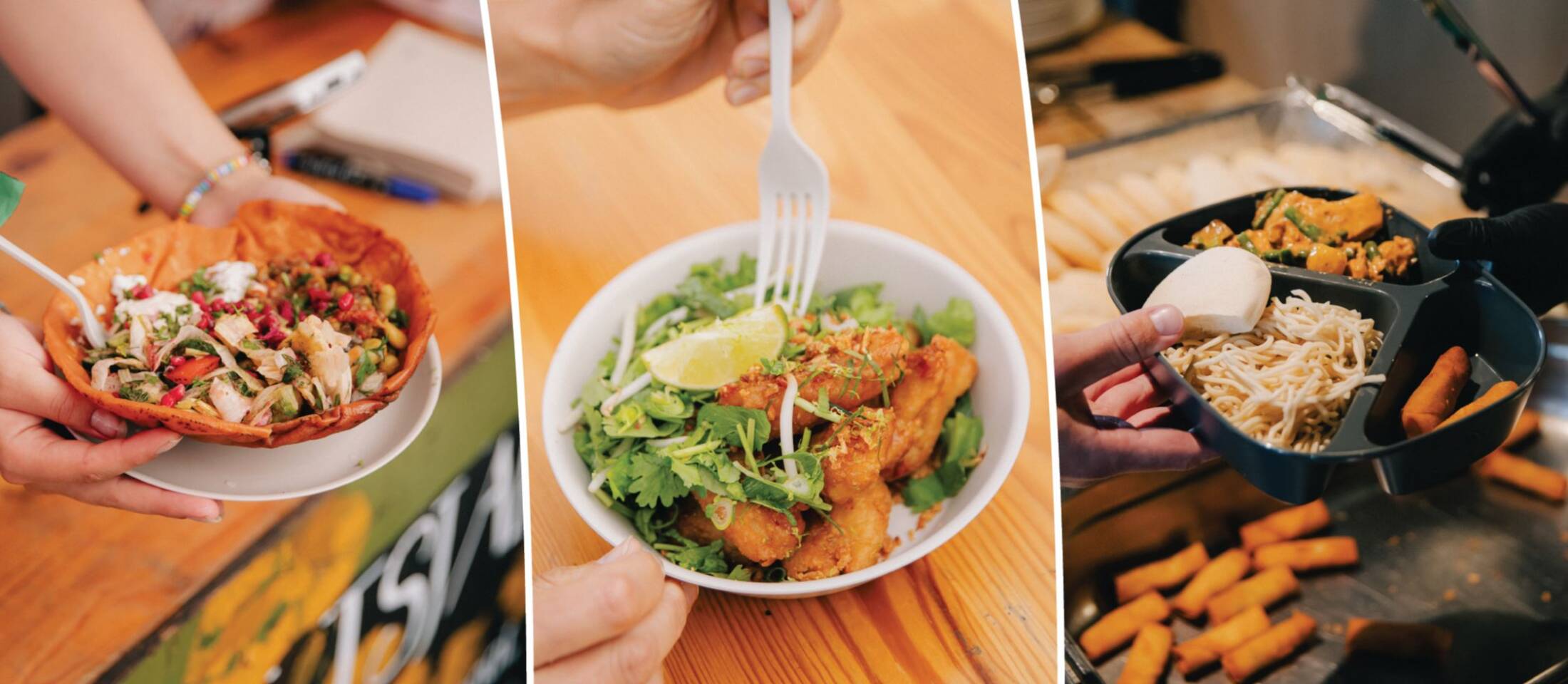Back to mainpage
*page in dutch
Working closely with our customers, we are investigating the best ways to get cups and tableware back, whether this is via reusing or recycling. We also advise as to whether subsidies are available, to help organise companies more sustainably and to reduce waste streams.
Reusable tableware at Into The Great Wide Open
Recycling

Read more
about (r)PET
cups here
Read more
about cardboard coffeecups
here*

In 2025, the minimum required return percentage is 80%.
At closed (event) locations, return percentages of around 90% are possible if return incentives are used (B2C) or if good roll-out is carried out within the organisation (B2B).
In 2024, our partner CircularPET collected 84,000 kg of (r)PET cups; approximately 84% were returned.
What we saw in 2024 with reusable tableware:
Return rates of 95% are possible with a deposit or other return incentives.
We can even achieve a 98% return rate in closed B2B environments, provided the system is properly set up with sufficient collection bins and clear communication.
An average of 93% of the packaging we rented in 2024 was returned.

‘To encourage reuse,
we use innovative collection options.’
Reusable cups
and dishes

To encourage reuse, we use innovative collection options. Smart bins, for example, recognise packaging with RFID tags and make deposit systems possible. When consumers return a cup, the deposit is automatically refunded. This encourages packaging returns, reduces fraud, and reduces the need for additional staff.
One of the most powerful ways to reduce your impact is to use reusable cups and tableware. Paardekooper offers a wide range of solutions for this, both for rental and purchase.
In addition to reuse, recycling is an important pillar for the management of packaging. Examples of recycling initiatives include the recycling of cardboard coffee cups and (r)PET cups. These cups can be collected and recycled into new products, and this contributes to waste reduction and prevents litter.
The future of food and beverage packaging is circular and sustainable. By using reusable systems, smart collection systems (such as smart bins) and RFID cups, we can significantly reduce the environmental impact of packaging. Recycling also plays a key role by closing the loop and reducing waste.
